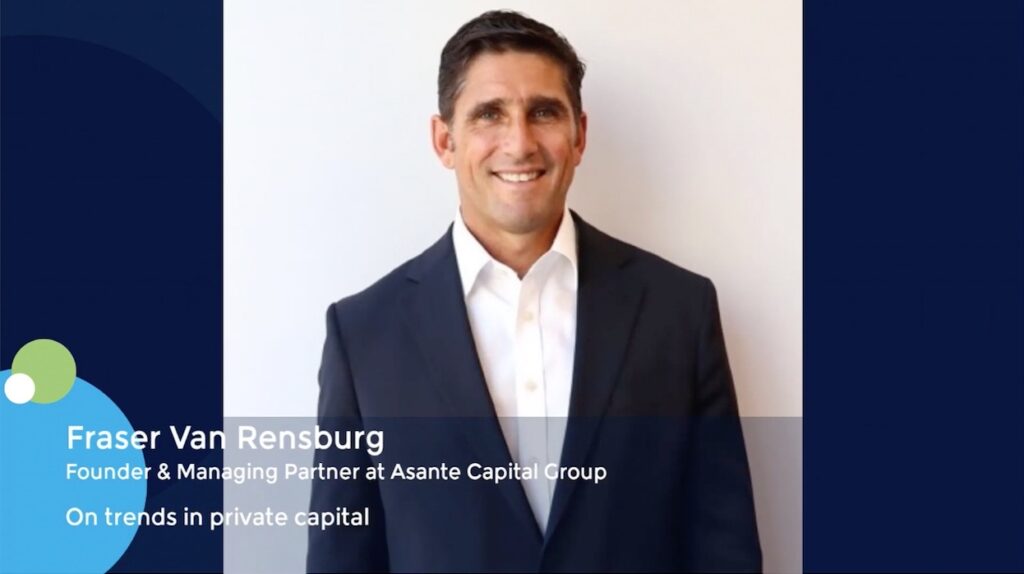Larry Kaplan, Founder at CSG Partners, on the evolution of ESOP
In a recent ION Influencers fireside chat, host Giovanni Amodeo sat down with Larry Kaplan, founder of CSG Partners, to discuss the evolution of Employee Stock Ownership Plans (ESOPs)—a powerful tool for business owners seeking liquidity, tax advantages, and employee wealth creation.
Here’s a breakdown of the key topics covered in this discussion:
1. The Origins of ESOPs & Larry Kaplan’s Journey
-
Larry’s first ESOP deal (1999) involved a young entrepreneur selling 30% of his company tax-free, later exiting for $140M.
-
The 1999 S Corp ESOP legislation was a game-changer, allowing tax-free flow-through income for employee-owned businesses.
2. Major Milestones in ESOP Evolution
- 1999 S Corp ESOP Legislation – Enabled tax-free status for S Corp ESOPs, revolutionizing liquidity strategies.
- Expansion of Credit Markets – Banks and private lenders (e.g., Meridian Capital) now fund ESOPs without personal guarantees.
- Rising Deal Sizes – Average ESOP transactions grew from $40M (10 years ago) to $100M-$150M today, with some nearing $1B.
3. Why Business Owners Choose ESOPs
- Tax Benefits – Zero federal/state taxes for S Corp ESOPs vs. 40%+ for C Corps.
- Liquidity Without Selling Out – Founders retain control while cashing out tax-efficiently.
- Legacy & Community Impact – Preserves jobs, local economies, and company culture.
4. Hot Industries for ESOPs in 2024
- Cannabis – ESOPs help bypass 70% effective tax rates under IRS Section 280E.
- Construction – Contractors, electrical firms, and data center builders are adopting ESOPs.
- Healthcare – Doctors avoid PE roll-ups, maintaining autonomy while securing liquidity.
- Accounting Firms – Major firms like BDO are transitioning to ESOP structures.
5. Future of ESOPs: Trends & Regulations
- Deal Volume Growth – Expected to rise 20-30% annually, with 250-300 ESOP deals/year in the U.S.
- Bipartisan Support – Pro-ESOP legislation (e.g., C Corp tax deferral for S Corps) is gaining traction.
6. Who Should (and Shouldn’t) Consider an ESOP?
- Ideal Candidates – Profitable businesses with strong cash flow and long-term vision.
- Poor Fit – Companies with negative cash flow or owners seeking maximum upfront sale value.
7. The ESOP Ecosystem: Key Players
- Banks (JPMorgan, Citi, PNC) now have dedicated ESOP lending teams.
- Law firms specializing in ESOP transactions are growing.
- Private credit lenders are fueling larger deals.
8. Employee Benefits & Wealth Creation
- Employees earn stock allocations based on salary, with some retiring with $1M+ in ESOP accounts.
- Non-discriminatory structure ensures all employees benefit, fostering loyalty.
Final Takeaway
ESOPs are no longer a niche strategy—they’re a mainstream exit and wealth-building tool for business owners who care about tax efficiency, legacy, and employee prosperity. With deal sizes soaring and regulatory support expanding, ESOPs are poised for explosive growth in the coming years.
Key timestamps:
00:07 Introduction to ESOPs and the Host
02:27 Milestones in ESOP Evolution
03:47 Impact of S Corporation Legislation on ESOPs
04:59 Client Education and Common Misconceptions
06:39 Challenges and Misunderstandings about ESOPs
07:36 Timeline of ESOP Transactions
08:31 Evolution of the ESOP Ecosystem
09:46 Managing Founder Expectations in ESOP Transactions
11:31 Recent Trends in ESOP Transaction Volume
13:01 Average Deal Size Growth in ESOPs
14:51 ESOPs in the Cannabis Sector
16:37 Emerging Sectors for ESOP Growth
18:14 Future Regulations Impacting ESOPs
19:27 Bipartisan Support for ESOP Legislation
21:16 Role of Advisors in ESOP Transactions
22:37 Stakeholders in ESOP Transactions
23:39 Management Responsibilities in ESOPs
24:55 Challenges of Attracting Talent in Remote Locations
25:56 Employee Participation in ESOPs
27:28 Conclusion and Final Thoughts












